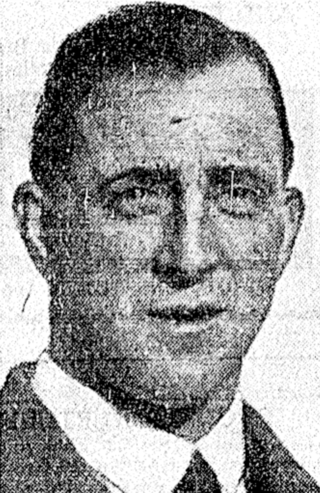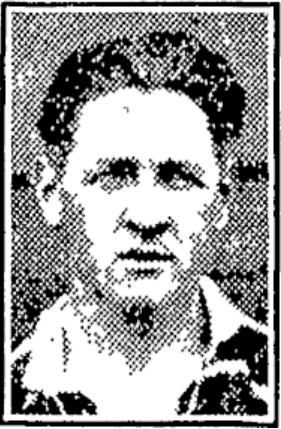
The Auckland Rugby League (ARL) is the governing body for the sport of rugby league in the Auckland Region of New Zealand including both club, school, and representative league.
The Auckland rugby league team is the team which traditionally represents all of the clubs which play in the Auckland Rugby League competition. As well as a senior men's team there are also Auckland representative teams throughout the various age groups such as under 15s, under 17s, under 19s and under 21s.
The Auckland Rugby League competition has been competed for since 1909 when the first organised match was played between North Shore and City Rovers. The following year an official champion was crowned for the first time, namely the City Rovers club who won the 1910 1st Grade title and were one of the 4 original teams at that time. Over the following 110 years many team and individual trophies have been awarded. The following is a list of the clubs and individuals that they have been awarded to at the premier-grade level.

Karl Donald Ifwersen (1893–1967) was a New Zealand rugby football player who represented New Zealand in both rugby league and rugby union.
The 1910 New Zealand rugby league season was the third season of rugby league that had been played in New Zealand.

George Maurice Victor Sellars was a rugby union player who represented New Zealand fifteen times, including two Test matches. He played club rugby for Ponsonby, and was first selected for Auckland in 1910, and in 1912 gained international selection for New Zealand Māori. Sellars was selected for the All Blacks – as New Zealand's international team is known – for their 1913 tour of North America where he played fourteen matches. As well, he was also in the All Blacks' side that played Australia immediately prior to their tour. Although unavailable to play for New Zealand the following year, he did represent the Māori again that season. In 1915 Sellars enlisted for service in the First War War, and he was fatally wounded in 1917 at the Battle of Messines. He has no known grave and his name is among those recorded on the Messines Ridge Memorial, at the Messines Ridge British Cemetery.

The 1929 Auckland Rugby League season was its 20th. One of the key events of the season was the tour of the South Sydney side.
The 1932 season was the 24th season of the Auckland Rugby League.
The North Shore Albions were a rugby league club based on the North Shore of Auckland in Devonport before moving to Bayswater at a later time. They formed in 1909 and folded in the early 2000s due to a lack of playing numbers. At the start of the 1920 season they were renamed Devonport United when they amalgamated with the Sunnyside club. It was proposed at the merger that they be known as North Shore Albions but Sunnyside objected and the name of Devonport United was chosen. In 1937, 17 years later at their annual general meeting they decided to revert to the name "North Shore Albions" as they had been commonly referred to as "shore" for many years. Chairman H. Mann made the proposal and it was adopted by the club. Aside from Northcote and Birkenhead Ramblers they were the only club on the North Shore at that time. They closed their doors in 2005. The only remaining club connected to them are the Northern Brothers who are based at Ngataringa Bay Sports Field. Their senior team is an amalgamation of East Coast Bays Barracudas and Glenfield Greyhounds but are based more in the North Shore Albions traditional area which includes the navy ground which has provided many players and teams over the years. The predominant colours are black and green which have been common colours of all the North Shore clubs over the decades.
Arthur Matthews (1889–?) played for the New Zealand rugby league team in 1919 on their tour of Australia. He was Kiwi number 117. He played in 3 tour matches but did not play in any tests as there were none played on this tour. He lived in Auckland and played for the Ponsonby United and North Shore Albions senior teams from 1915 to 1920.
William George Walsh was a New Zealand rugby league player. He first played for New Zealand in 1919 on the tour of Australia and became Kiwi number 122. He ended with 8 matches for New Zealand in total playing one test against Australia. He played his entire club career with the Ponsonby United club in the Auckland Rugby League.
Keith Ervid Helander was a New Zealand rugby league player. He played one test for the Kiwis in 1919 against Australia, becoming the 135th player for the national side, in addition to one game for Auckland. In late 1921 he switched codes to Rugby Union and represented Auckland. Helander fought for New Zealand in World War 1.
Tom Haddon was a New Zealand rugby league player. He was Kiwi number 136 after playing two tests for New Zealand against Australia in 1919.

John (Jack) Patrick Kirwan was a rugby union and rugby league player. He represented the Hawke's Bay province and Auckland in rugby union before switching to rugby league in 1924. He was selected for the New Zealand team in 1925 becoming Kiwi number 174 in the process. His grandson was also named John Kirwan and he went on to become a famous All Black in the 1980s and 90s before also switching to rugby league.
George Paki was a New Zealand international rugby league player. He debuted for New Zealand in 1921 and became Kiwi number 151 in the process. He also played for New Zealand Māori rugby league team and an unofficial New Zealand Māori rugby side which toured Australia and New Zealand in 1913.

Inglis Ivan Irwin Levers Littlewood was a rugby league player who represented New Zealand for the first time in 1925. In so doing he became Kiwi 181. He also represented the Lower Waikato, South Auckland, and Auckland representative rugby league teams from 1919 to 1927.

Hector Stanley Esmond Cole was a New Zealand rugby league player who played for the New Zealand in 1926 and 1927. He made 14 appearances for them and was Kiwi number 183. He also played several times for Auckland and represented the Ponsonby United club from 1922 to 1929.

Charles Gregory was a rugby league player who represented New Zealand in 40 matches including 3 tests from 1925 to 1930. When he debuted for New Zealand in 1925 he became Kiwi number 171. He predominantly played fullback during his career though he played standoff and centre at various points. He also represented Auckland in both rugby league and rugby union and played for the Ponsonby rugby club and the Marist rugby league club.

George Gardiner was a New Zealand rugby league representative player. He played for New Zealand in 1926 becoming the 185th New Zealand representative. He was also a Bay of Plenty rugby representative as well as playing for the first ever Bay of Plenty rugby league team. After he finished his rugby league career he became a professional wrestler fighting mainly in Australia. He fought in World War 1 for New Zealand and fought and died serving in the Australian forces in World War 2.
Edward Joseph Bennett was a New Zealand rugby league footballer. Bennett played in the second row position. He represented the New Zealand rugby league team in two test matches against England in 1920. In the process he became the 144th player to represent New Zealand. He also played for the Waiuku rugby club, and the Newton Rangers, and Grafton Athletic rugby league clubs. Bennett also represented the Auckland and North Island rugby league teams.










